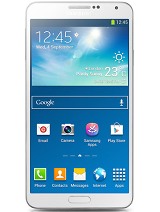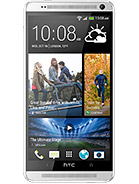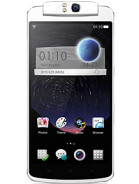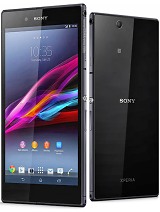Nokia Lumia 1520 review
Introduction
The Nokia Lumia 1520 is just like the rest of the premium Lumia smartphones we've seen, but bigger and faster. The advanced imaging and the custom app selection by Nokia will make the difference against Android phablets, with the Snapdragon 800 making sure the Finn won't feel outgunned. Sounds like a promise for the best experience yet on Windows Phone.
A few months ago Nokia was in the headlines for what seemed the wrongest of reasons to people who fondly remembered the Finns from their glory days. Voices were rising once again above the lamenting choir, about what might have been had Nokia gone with Android instead.
Oh well, we're well past the what-ifs and should-haves. And no, it's not because Microsoft's check has already been written. Nokia's first phabet has crossed into what was, until now, a strictly Android territory. And not just average droids either, but some of the biggest, meanest species of Android we have seen.
The Nokia Lumia 1520 didn't just tip-toe in, looking over its shoulder. Armed with a PureView camera, a 1080p display and a quad-core Snapdragon 800, the Finnish giant entered with a bang!
The latest GDR3 version of Windows Phone finally has support for quad-core Krait processors and Full HD displays. There's an attempt too, to make better use of the size and resolution by adding an extra column of contents across the interface. It was about time Microsoft brought the platform back in the hardware race and we are delighted to finally meet the first Windows Phone to aim for the pole position.
Key features
- Quad-band GSM/GPRS/EDGE support
- Quad-band 3G with 42 Mbps HSDPA and 5.7 Mbps HSUPA support
- Penta-band LTE Cat4 support, 150Mbps downlink, 50Mbps uplink
- 6.0" 16M-color ClearBlack IPS CLD capacitive touchscreen of 1920 x 1080 pixels; Corning Gorilla Glass 2; Nokia Glance
- 20MP PureView sensor (15MP effective), 1/2.5" sensor size, ZEISS lens, Optical Image Stabilization, dual-LED flash
- 1080p@30fps video recording; 2x lossless digital zoom
- 1.3MP front-facing camera
- Windows Phone 8 GDR3 OS with Nokia Black
- 2.2GHz quad-core Krait 400 CPU, Adreno 330 GPU, Qualcomm Snapdragon 800 chipset, 2GB of RAM
- Wi-Fi 802.11 a/b/g/n/ac, dual-band
- GPS receiver with A-GPS and GLONASS support
- Free lifetime worldwide voice-guided navigation
- 32GB of inbuilt storage
- microSD card slot, up to 64GB
- Active noise cancellation with a dedicated mic
- Wireless charging with optional accessories
- Built-in accelerometer, gyroscope and proximity sensor
- Standard 3.5 mm audio jack
- microUSB port
- Bluetooth v4.0 with A2DP and file transfers
- SNS integration
- Xbox Live integration and Xbox management
- NFC support
- Digital compass
- Nokia Music
- FM radio
For Full Specs Click Here
Main disadvantages
- Screen has average sunlight legibility
- Non-user-replaceable battery
- No system-wide file manager
- No lockscreen shortcuts
At first glance the Lumia 1520 looks like a magnified Lumia 1020 - it has the same design and build, only without the camera hump. The trademark unibody is the right bit more impressive at that size, while the PureView camera has lost some of its sensor area and half of its pixels, but hopefully kept the amazing image quality.
Nokia's Lumia Black update isn't bringing as many new features as Amber, while the GDR3 version mostly makes sure the OS would happily accommodate the new chipset and screen resolution. Users will perhaps have to wait for the 8.1 update for a notification center (hopefully) and a file manager (not too likely) among other things.
Final words
The Nokia Lumia 1520 is the company's first phablet but we're not saying that to set the scene for a softer verdict. On the contrary, an evolutionary leap for Windows Phone in terms of both hardware and software, the Lumia 1520 is a phablet worth having. No need to heap praise when it's as simple as that.
By the way, one can say the same for at least a couple of Microsoft-powered smartphones (mostly Finnish-made in honesty). No, Windows Phone isn't the most popular mobile OS and not as rich as the competition in apps and games, but it has value-adding features that are either unique or which require extra purchases over at the competition's camp.
It almost looks like Nokia and Microsoft were trying to impress each other at who can heap more goodies on the Lumia 1520. The global life-time voice-guided navigation license, the amazing imaging skills and Nokia Music against Microsoft Office, SkyDrive integration and Xbox.
To make it even better, this friendly competition was taken to the next level with Microsoft finally enabling support for high-res screens and the latest-generation of chipsets. As a result, the Lumia 1520 isn't all PureView camera but can flex its computing muscle right in the face of a bunch of incredulous droids. And what a bunch that is!
The Samsung's Galaxy Note 3, the last descendant of the product family that started it all, is deservedly at the top of the list. It's powered by the same Snapdragon 800 chipset and flaunts a 5.7" Super AMOLED screen and a solid 13MP cam. What certainly sets the Note 3 apart is the S-Pen pressure-sensitive stylus support, on top of an already feature-rich TouchWiz. At almost €200 cheaper than the Nokia phablet, the Galaxy Note 3 is probably the device the Lumia 1520 should be worried about the most.
The HTC One Max is the obvious match for size, though with a tad smaller 5.9" display and powered by the previous generation Snapdragon 600. It is made entirely of metal, comes with massive front stereo speakers and offers buttery-smooth Android experience. HTC One Max's camera is clearly inferior to the Lumia 1520's, so if you are after top notch imaging, with the One Max you would be looking in the wrong place.
The recently released Oppo N1 is a more likely competitor in cameraphone terms, and one that costs considerably less. Just like the HTC One Max, the Oppo N1 has a 5.9" 1080p display and is powered by the Snapdragon 600 chipset, but comes with a few unique features: a swivel 13MP camera, a rear touchpad and the O-Click remote.
The Sony Xperia Z Ultra has the high-end Snapdragon 800 ticking inside and isn't afraid to push phablet boundaries with its 6.44" display. The Xperia Z Ultra is IP58-certified for water and dust resistance, something no other phablet can match. Unfortunately, the ample bezels around the screen make the Sony phablet particularly hard to carry around despite its marvelously slim waistline. The camera is rather disastrous too.
This isn't about whether or not the Nokia Lumia 1520 is the best phablet on the market. Rome wasn't built in a day and it will certainly take more than one attempt to knock the Galaxy Note 3 off its perch. But Nokia has surely done well - the Lumia 1520 a device that can potentially interest more people than most phablets usually would.
Nokia may be heading for the exit but the legacy of achievement left behind wouldn't have been as great without the Lumia 1520. Yet, the 1520 will go down in history as the one that challenged the droids in a way no one thought possible. A way that makes you cringe at the thought that there might never be another phablet carrying that brand.
Special Thanks To: GSMArena.com










